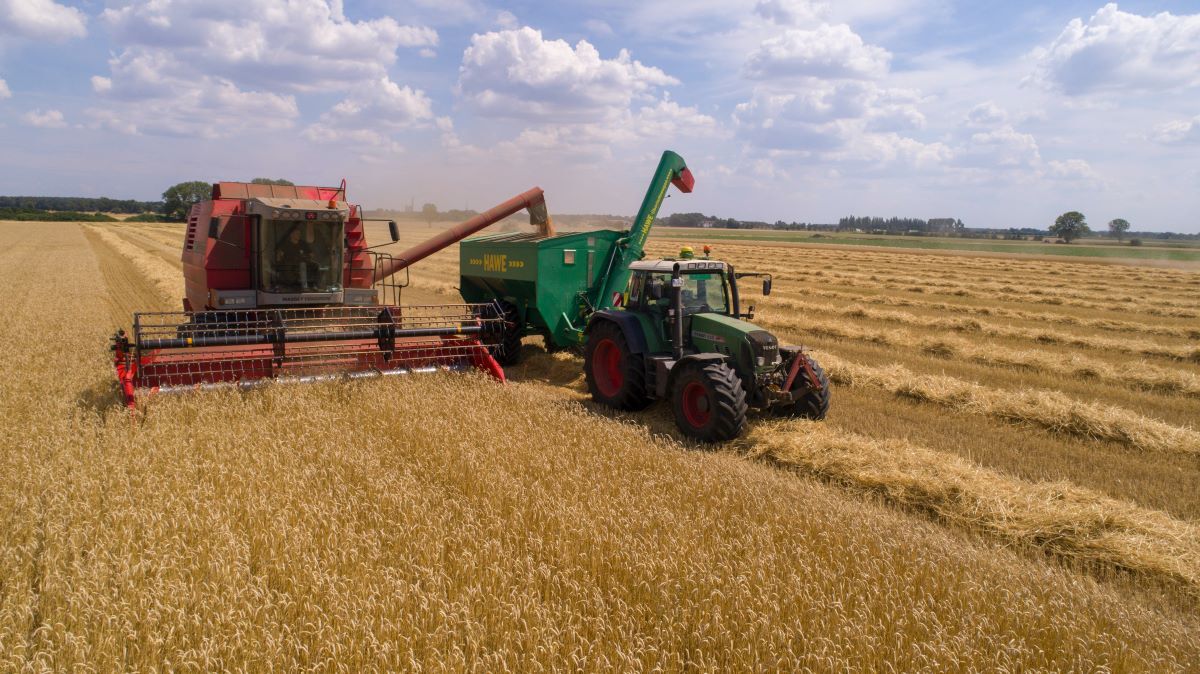
The opinions expressed in this article are the author’s own.
There are precious few upsides to Brexit, but here’s one. We’re coming out of the EU’s dysfunctional system for regulating genetically modified (GM) crops!
What do we know?
It’s a quarter of a century since the first GM crop, a tomato modified to prolong its shelf-life, was released for cultivation in the USA. What have we learned since about this controversial new technology? Let’s look at the two main areas of public concern – human health and environmental impact.
There’s no evidence that eating food derived from GM crops endangers anyone’s health. And that’s not for want of looking: around 1200 studies conducted over the past two decades have found GM foods to be safe. Former anti-GM activist Mark Lynas has joined mainstream scientists and science communicators in dismissing as “junk science” the few studies that claim to have found negative health impacts. “The GMO [genetically modified organism] safety debate is over,” says Lynas.
The case on environmental impact is less open-and-shut, but the overall balance is positive. Most GM crops grown in the developed world so far have been modified either to resist insects, or to tolerate herbicides. The insect-resistant technology has greatly reduced the use of insecticides, especially on a crop like cotton, which is typically sprayed 15 to 20 times per season when conventionally grown. The use of herbicide-tolerant crops has driven a switch to more environmentally-benign herbicides, and encouraged many farmers to give up ploughing in favour of zero or reduced tillage. This has curbed greenhouse gas emissions, through reduced fuel use for ploughing and spraying, and increased storage of soil carbon. Both these GM traits are associated with increased biodiversity, better soil quality, reduced soil erosion and improved water quality.
There is a snag, however. Just as happens in conventional intensive cropping systems, weeds and, to a lesser extent, insects in GM systems develop tolerance or resistance to the chemicals used to control them. In the case of herbicide-tolerant crops, many farmers were at first over-reliant on one or two herbicides, notably glyphosate, and resistance is now widespread, affecting some 48 weed species worldwide. Farmers have responded by increasing the amount and number of herbicides used on GM herbicide-tolerant crops. But because the same trend has occurred to an even greater extent in conventional systems, GM systems retain both economic and environmental advantages – at least for now.
Environmental outcomes are more clearly positive for the growing number of GM applications that are either completely independent of the use of chemicals, or at least imply substantial reductions in their use. Often created in developing countries, these technologies may benefit human nutrition, as golden rice does, for example, or contribute to sustainability, as drought-tolerant maize and wheat do. Such applications are likely to assume increasing importance in the future, as agriculture weans itself from the chemical culture dominant at present.
Like other yield-increasing technologies, GM applications can curb the expansion of agriculture – another route to positive environmental impact. “We can use these technologies to reduce the pressure to bring new land into cultivation, ” says Graham Brookes, an agricultural economist and the director of PG Economics, a consultancy firm based in Dorchester, Dorset. That pressure can only rise, as the world’s population grows towards a projected 9.8 billion by the middle of this century. Brookes adds: “Successful use of GM and other new breeding technologies would mean we could still spare land for re-wilding, protect forests and save areas with high biodiversity.”
Globally, there is no doubt that GM technology has already raised crop yields and farm incomes at the same time as mitigating climate change. In the four main GM crops – soybean, maize, cotton and rapeseed – the technology brought farmers gains worth £173.1bn over the period 1996–2018. The cumulative reduction in fuel use alone during this period was about 34,172 million kg of carbon dioxide, equivalent to taking 22.65 million cars off the road for a year.

Feelings, not facts, have shaped public opinion on GM, just as they have on EU membership. Myths and misinformation have won out over reason (see below).
Fact and fiction in the GM debate
Logical flaws undermine the arguments typically made against GM. Here are three examples:
• GM discourages seed saving. True for some major food crops, such as maize – but true of all hybrid crop varieties in these species, not just GM ones. This is an argument made by those with sentimental views of ‘traditional’ agriculture. The reality is that farmers have just as much right as anyone else to use modern technology. Millions of farmers worldwide vote with their pockets and buy hybrid seed each year because they enjoy the advantages this brings: higher yields and incomes.
• GM R&D (research and development) is entirely profit-driven. False – while profitable technologies are developed and marketed by the private sector, lots of work is also done by public-sector research institutes, and many GM applications benefit smaller and/or poorer farmers. Often the model is one of public–private partnership.
• GM is unnatural. False – GM allows genes to ‘cross the species barrier’, but this happens in nature anyway, viral DNA being the prime example (as coronavirus has reminded us!). There is no such thing as ‘natural agriculture’: GM and other new breeding technologies are merely the most recent in a list of methods for manipulating plants and animals that dates back to early domestication.
GM is a set of techniques for moving genes around. It is no more than that, however much excess baggage misguided activists bring to the debate.
If some activists are guilty of distortion, it’s also true that some scientists have gone in for hype. GM is not a magic bullet that will ‘transform world agriculture’, curing all its ills. It is just one tool in the kit we have for making farming more sustainable and productive.
Entrenched positions
Public sentiment on GM is changing, but you wouldn’t know it: the two sides in the GM debate remain stubbornly entrenched.
A decade has gone by since leading anti-GM campaigner Mark Lynas recanted in public, confessing in a live Channel 4 debate that his anti-GM stance had actually damaged the causes he and his colleagues were fighting for, especially the fight against climate change. In an address to the Oxford Farming Conference in 2013, Lynas apologised for his previous activism, which had included the trashing of GM crops. Then came a book, Seeds of Science, exploring why the debate had become so polarised. And in 2018, in another address to the Oxford conference, Lynas outlined a seven-point plan for a ‘peace treaty’ between the warring sides. He ended by quoting the murdered MP Jo Cox: “We have far more in common than that which divides us.”
Over roughly the same period – and perhaps due in part to this change of heart by Lynas and other opinion-leaders – public concern about GM crops more than halved, from 69 per cent in 2010 to 27 per cent in 2019, according to Eurobarometer surveys. People have seen through the non-governmental organisations’ (NGOs’) scare stories and realized there are other, more serious issues to worry about.
That hasn’t, however, made any difference to the position adopted by leading environmental NGOs such as Greenpeace and Friends of the Earth, which continue to oppose the technology despite the wholesale demolition of their arguments by scientists. Greenpeace’s website claims that “the surge in genetically engineered crops in the past few decades is one of the main drivers” of the increased use of pesticides and other chemicals in agriculture, whereas in fact GM is often associated, as we have seen, with the reduced use of less toxic chemicals, at least compared with conventional production. In any case it is the lowering of toxicity that is significant, rather than the amount used. Friends of the Earth say that “GM technology has failed to increase food yields”, a claim that flies in the teeth of evidence from over 25 countries, that shows it has indeed raised both yields and farm incomes. In 2014, over 100 Nobel laureates signed an open letter to governments and UN agencies, accusing Greenpeace of having “misrepresented the risks, benefits and impacts” of GM crops.
One area where dialogue ought to bear fruit – but hasn’t thus far – is organic agriculture. Many in the organic movement continue to favour a blanket ban on all GMOs, regarding them as by definition ‘unorganic’, whereas scientists point out that GM crops that don’t need chemical inputs and can mitigate against climate change ought to be welcomed by the organic sector. In Point 5 of his peace plan, Lynas urges both sides to drop the false dichotomy of ‘natural’ versus ‘unnatural’ approaches to farming. A synthesis beckons, but remains elusive because no one wants to give ground.
GM foods have always been a difficult sell to consumers in developed countries. The first generation of GM technologies mainly benefited farmers and food processors, so didn’t seem relevant to the 95 per cent of the population who no longer derive their living from the land. Perceptions may have started to change with the arrival of GM foods with a nutritional benefit, but by that time the damage was done in policy makers’ minds. Unreason now rules, forming a marked contrast with the human health sector (see below).
Inconsistency and hypocrisy: human health versus agriculture
Despite the best efforts of the anti-vaxxers, innovations in human health tend to be more easily accepted than is new technology in agriculture. Life-threatening diseases sharpen both public perception and politicians’ decision making.
November 2020’s news of promising vaccines developed against COVID-19 saw politicians across the UK and the EU queue up to praise the achievements of the scientists involved. Yet these vaccines have been developed using the very same GM and other genetic techniques that most politicians have spent the past 25 years denying to farmers and food consumers.
Is it too much to hope for less inconsistency and hypocrisy in the future? If the irrational approach to approval currently used for GM in agriculture were applied to COVID-19 vaccines, the public might never get access to vaccines – or could only do so in about 5 years at best. Is any politician prepared to stand up and explain that to the public?
Category error
The EU developed its GM regulatory system in the early 2000s, when public concern and activism were at their height.
That a specific GM regulatory system exists at all is down to a basic category error. EU technocrats view GM crops as a separate class of crops to those developed using conventional plant breeding techniques. This is wrong: the nutritional and environmental impact of a new crop variety depends on what is in it, not how it got there – traits rather than methods. Herbicide tolerance is a case in point (see below).
It’s the herbicide, stupid
The UK’s Advisory Committee on Releases to the Environment (ACRE) considered this issue in detail in a series of three reports published in 2013.
The committee’s first report found that the environmental effects associated with GM crops were due more to the effect of novel herbicide regimes on natural weed populations than the presence or absence of GM per se. The report concluded: “It is difficult to find any compelling evidence that the techniques used for trait manipulation have any bearing on the environmental consequences of release.”
Public concern over the use of chemicals in agriculture gets confounded with concerns about GM. The two issues are separate.
In 2014 a panel of experts set up by the UK Biotechnology and Biological Sciences Research Council concluded that “a regulatory system based on the characteristics of a novel crop, by whatever method it has been produced, would provide a more effective and robust regulation than current EU processes, which consider new crop varieties differently depending on the method used to produce them”. In short, the approach to evaluation should be product-based, not process-based.
Labyrinthine process
Other shortcomings compound this fundamental logical flaw. The system aspires to be science-based, but is in reality driven by popular misconceptions and fear of the new. It assesses risks, some of them imaginary, but ignores real benefits. (In this it is at odds with other regulatory systems, notably those for new medicines, which balance risks against benefits.) There are too many cooks, with decision-making shared among a plethora of bodies and no one taking ultimate responsibility. Checks and balances lead to a tortuous process that is subject to abrupt reversals. And the system is prone to massive delays.
In fairness, some of these shortcomings reflect the influence of member states rather than the EU itself. The EU resembles the UN in being the target of accusations that should properly be laid at the door of individual countries and governments. That said, the system’s history doesn’t inspire confidence.
Europe’s first GM crop release came in 1998, with the EU’s approval of Bt 176, a Bt maize variety developed by Syngenta. Another Bt maize, MON810 developed by Monsanto, was approved for release by the governments of Spain and France. Both releases elicited protests from campaigners, and allegations of risks to human and animal health. Partly in response to these protests, the EU enacted a de facto moratorium on all new GM crop varieties while new laws were drawn up. The further release of MON810 was suspended under the moratorium.
The new laws, which came into force in 2003, provided the EU with what are arguably the world’s most stringent GM regulations. All GM crops are subject to a case-by-case evaluation, even if they resemble earlier releases. The risk assessment that is part of the evaluation must be repeated every 10 years.
A new institute, the European Food Safety Authority (EFSA), was set up in 2002 to conduct the evaluations, but its role is advisory only, and its advice is all too often ignored. Once a new GM application has been evaluated, EFSA reports to the European Commission, which drafts a proposal to grant or refuse authorization. This proposal is submitted to the Section on GM Food and Feed of the Standing Committee on the Food Chain and Animal Health. If accepted, it then passes to the Council of Agricultural Ministers, where it has 3 months to gain qualified majority approval by the member states.
The handing of power to the member states has effectively paralysed the approval process, which has become a matter for political horse-trading rather than evidence-based decision-making. For example, France’s President Sarkozy allegedly made a deal with ecologists not to come out in favour of GM, provided the ecologists backed off on nuclear power.
Even after approval, individual states can still ban new GM varieties under a “safeguard clause” if they think there are “justifiable reasons” why the variety might harm human health or the environment. At first, evidence was required, but in 2015 an opt-out was introduced that allowed states to refuse any or all GM releases on their territory without providing scientific justification. Fearing a backlash from a still-sceptical public, 18 countries and four regions invoked such clauses in relation to MON810, including Scotland, Northern Ireland and Wales, in addition to Germany, France, Italy and Poland. Meanwhile, Syngenta withdrew Bt 176, which contained an antibiotic marker gene banned under the new regulations.
Fears of geneflow – the ‘escape’ of transgenes and their spread to non-GM plants – prompted further guidelines in 2010 on “co-existence”. These specify the minimum distances that must be observed between GM and conventional or organic crops in farmers’ fields, but they are not binding, and each country has its own guidelines: a recipe for uncertainty as to their effectiveness. Other measures to prevent the mixing of GM and conventional crops include biological containment, used in the laboratory, and rules governing the transport of planting materials and harvests. Reflecting consumer demand for freedom of choice, all foods and feeds containing GMO material must be labelled accordingly. If the GMO content is below 0.9 per cent, labelling is not required if operators can prove that the presence of GMO residues is unavoidable due to trading or technical conditions.
Few GM crops make it through this labyrinthine process. After the new laws came into effect in 2003, no new releases were forthcoming until 2010, when Amflora, an improved potato developed by BASF, was approved. A few months later that decision was annulled when the European Court of Justice (ECJ) ruled that the Commission had failed to follow correct procedure. In 2012 BASF withdrew the potato from the European market because of the lack of acceptance by member states. The renewal required for approval of MON810 maize, when the initial 10-year term expired, has remained pending since 2007 because the now much-larger number of EU member states ̵ 27 instead of 14 ̵ continually fails to reach a majority vote, despite a record of safe use for the crop that goes back over 20 years.
The slow pace of approvals has been criticized as endangering regional food security. In 2016, the European Ombudsman ruled that the delays affecting some 20 GM food and feed applications reflected a “systemic problem” and amounted to “maladministration”.
In his peace plan, Lynas implored activists to stop agitating for bans on GM foods. He summed up the EU’s approach with these words: “Europe’s anti-GMO stance is a global embarrassment and needs to be seen for what it is – a shameful public concession to misinformation and hysteria.”
Depressed science, depressed agriculture
The EU’s dysfunctional GM regulatory system has had dire consequences for Europe’s biotechnology and farming sectors. The chances of getting through the system are now so low that no companies bother to bring forward GM applications for approval in EU territory. The number of field trials of GM crops in the EU fell by 90 per cent between 2010 and 2016. Of the 27 member states, only 11 currently permit GM field trials.
EU farmers are missing out. Agricultural productivity growth across the region has been sluggish or non-existent over the past decade in crops for which GM technology exists but cannot be used. In contrast, as we have seen, in other parts of the world where the technology has been adopted, crop yields and farm incomes have risen substantially and the environment has also benefited.
Countries that have recently joined the EU provide an instructive counterfactual, showing what happens with and without access to GM technology (see below).
The EU’s stranglehold on farmers: GM soybean in Romania
Once upon a time, Romania had a flourishing GM soybean sector. The introduction of GM varieties in 1999 led to yield gains in farmers’ fields of 18 per cent due to better weed management and the reduced use of herbicides. Farmers rapidly adopted the crop and the country became a net exporter.
But the good times ended abruptly when Romania joined the EU in 2007. Farmers had to stop growing GM soybean because it had not been approved by the EU’s regulatory system. The area planted to soybean fell by 70 per cent over a 2-year period. Like the EU as a whole, Romania once again became a net importer of vegetable protein.
EU farmers are still not allowed to grow GM soybean. EU countries currently import over 19 million tonnes of the crop and 20 million tonnes of soybean meal annually.

As an EU member state, the UK too has suffered. Private-sector R&D expenditure in our crop genetics sector has plummeted in the past 20 years, from about £50m per year in the late 1990s to about £1.25m today. Over the same period the number of staff working on GM crop innovations fell from some 475 people to around 10, as companies relocated their operations. Syngenta, Monsanto and BASF have all shut down their GM-related work in the UK and moved it to the USA and China. In the public sector, a handful of scientists at world-renowned institutes such as the John Innes Centre and Rothamsted Research continue with a small amount of crop genetics research and development. The UK’s annual R&D expenditure in the sector is now minute – less than one-tenth of one per cent (0.1 per cent) of the global annual total. “We no longer have a crop biotech sector worthy of the name,” says Brookes.
In a final blow to regional R&D, the EU compounded its errors on GM by ruling that the products of gene editing (GE) should come under the same regulatory process. GE comprises a new set of techniques – CRISPR is the best known of them – that allow precise alteration of a genome, often without the transfer of genes from other species. In some cases genetic material is even subtracted from the genome (note gene editing should not be confused with genetic engineering, also abbreviated to GE). GE technologies posed a new question for regulators: if the end product contains no foreign DNA, should it not be treated as if it were the product of conventional breeding? Scientists in some EU countries recommended that such products be exempt from GMO regulation, but this decision was challenged by NGOs and it was left to the ECJ to decide. Despite advice to the contrary from EFSA, the court delivered a final ruling in July 2018 that GE products are GMOs, and should be subject to the same regulation.
While the organic food lobby welcomed the decision, the ECJ ruling left many scientists dismayed. “This decision sends a signal that the EU is an unfavourable location for plant genetics research and the development and commercialization of new crop varieties,” says Brookes. “It has the potential to cause significant trade disruption, especially for key livestock feed ingredients.”
Which path to take?
Leaving the EU provides the UK with a unique opportunity to reinvigorate its biotechnology and farming sectors, according to a report published by PG Economics in 2018.
Commissioned by the Agricultural Biotechnology Council, the report considers three future scenarios: (1) maintaining the status quo – alignment with EU regulations; (2) limited divergence from the regulations; and (3) the UK setting its own regulatory path for both GM and GE technologies.

Maintaining strict alignment with EU rules would make it easier to rejoin the EU if we wish to do so. But we don’t know how long that will take, if it ever happens at all. And in the meantime the downside is the risk of more trading difficulties and further loss of economic and social benefits, as inward investment and expertise continue to slip away from our country.
Limited divergence – making EU rules operate as intended and dispensing with some of the regulations on GE – could deliver gains from improved competitiveness, investment in new research and the development of new crop varieties.
But the best scenario, the report says, would be to set our own regulatory path, for both GM and GE products. This will lead to the highest levels of research expenditure and employment, as our biotech industry is rebuilt. It could also lead to new traits and seeds becoming available to UK farmers and food processors. Ultimately, consumers could also gain, as the price of food falls.
Fresh fields, pastures new
The opportunities for GM and GE products in the short-to-medium term are limited, because national R&D capacity is at such a low ebb. But there are some – and prospects brighten as time goes on.
The one major food crop that offers immediate opportunities is GM potato, specifically a variety bred for resistance to blight (see box). Although developed in the UK, this is not grown by UK farmers at present, but is instead being released in America. “It’s ironic that a crop developed using UK taxpayers’ money will benefit farmers and consumers in other countries before it benefits us,” says Brookes.
Spuds you might like: Blight-resistant potato, a UK opportunity
Scientists at the John Innes Centre, near Norwich, have developed a GM potato variety resistant to late blight, a devastating fungal disease that caused the infamous Irish potato famine of the 1840s.
Developed by transferring a gene from an Andean wild relative into a modern cultivar, the new GM variety promises big gains in yields and yield stability, as well as environmental benefits: farmers must protect conventional, non-resistant varieties by spraying them with expensive fungicides, up to 15 times a season; with the GM crop, that won’t be necessary.
While the UK remains subject to the EU’s regulatory system, the crop cannot be grown here. The John Innes Centre has licensed Simplot, a US company, to release the technology to American farmers.
The prospects for GE applications look more promising, especially if regulation eases and they can be deployed relatively quickly. At Rothamsted, for example, research is under way on false flax (Camelina sativa), an oilseed. The plant’s genome has been edited to produce more oleic acid, a mono-unsaturated fat that can benefit human health and the environment. Scientists in the USA have used GE to develop soy with low levels of hydrogenating fats, an application that could be relatively easily taken up in the UK and that may also have human health benefits.
The main farming enterprise in the West Country is livestock, so the potential benefits for farmers in our region lie mostly in feed production. GM is already used in feed crops such as soybean, and ingredients such as maize gluten, but these are mostly imported. We can expect more applications in these and other feed crops, with benefits not just to farmers, but also to consumers and the environment.
Looking further ahead, the case for GM and GE can only grow stronger, say scientists. New opportunities will open up in response to climate change. Drought-tolerant GM wheat, already under research at Rothamsted, could become relevant in dry parts of the country, such as East Anglia. Rothamsted has also developed a GM wheat variety that deters aphids, offering substantial reductions in pesticide use. The ‘holy grail’ is nitrogen-fixing grain crops, which would reduce the need for chemical fertilizers, and give massive savings in carbon emissions. While there is still some way to go on this, there has been good progress recently at the John Innes Centre.
Come on, Mr Eustice
Given that our national R&D sector is at such a low ebb, government support will be crucial if Britain is to make a success of striking out on its own. All the more so since UK research institutes are likely to find it more difficult to access funds and collaboration through EU programmes, after the Brexit transition phase ends on 31 December 2020.
In his first speech as prime minister, Boris Johnson pledged to “liberate the UK’s extraordinary bioscience sector from anti-GM rules”. In July 2020 an amendment to the agriculture bill, proposing the deregulation of GE technologies, was withdrawn in response to pressure from anti-GM campaigners, but the government did restate its commitment to this step. And in October, George Eustice, secretary of state for DEFRA (Department for Environment, Food and Rural Affairs), again expressed his support for GE, adding that the government disagrees with the EU’s stance on this issue.
Eustice is making the right noises, but so far there’s been no change in the law and no commitment of funds to make Johnson’s pledge come true. In the light of past performance, it’s probably naïve to expect this government to step up to the plate, but the opportunity is there. If grasped, it would provide one tiny crumb of comfort amidst the near-universal pain of separation from the EU.






